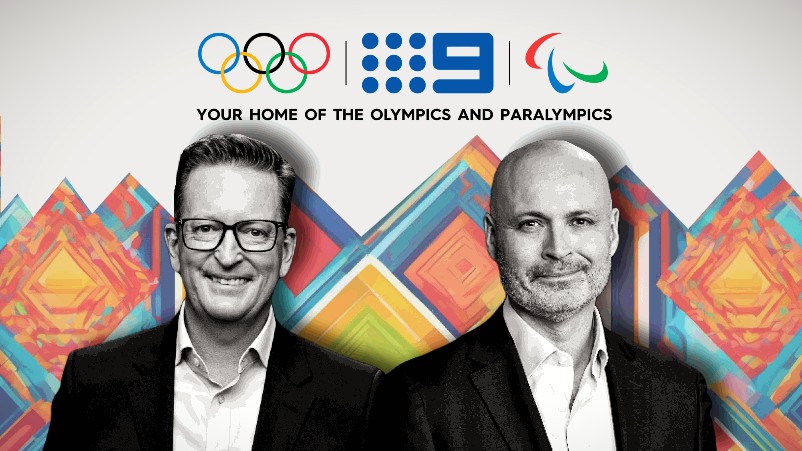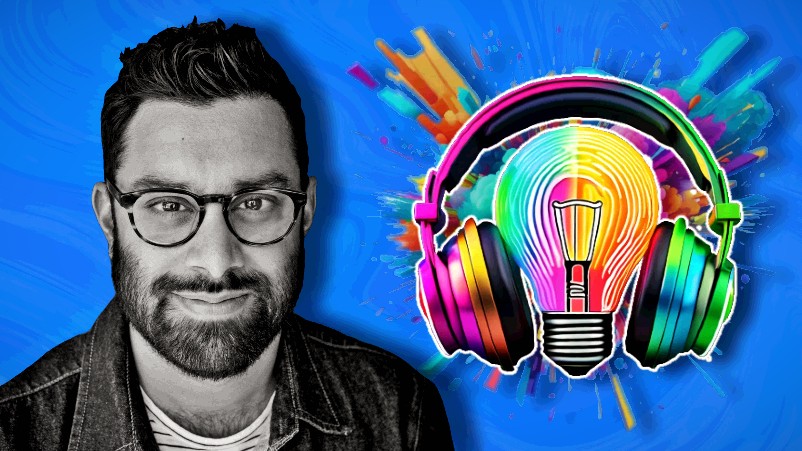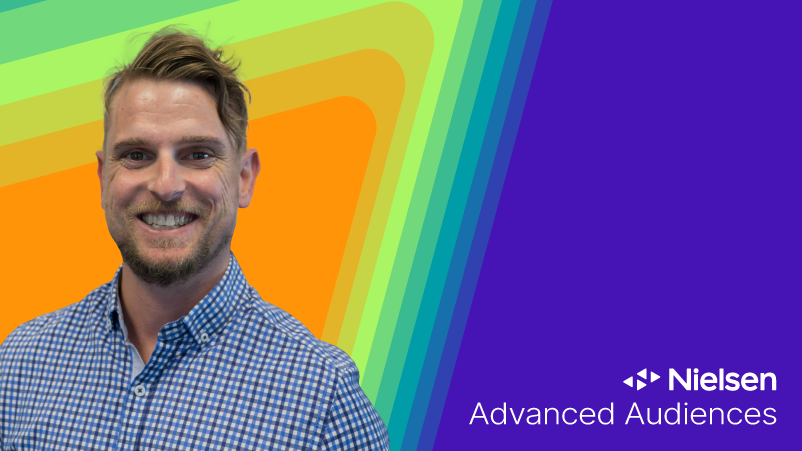Nine faces big tech test but on track to recoup $305m Olympics bet as Telstra, Qantas take top packages; buyers rate distribution breadth but doubt audience lift

After a year's worth of hustling, it's go time for Nine. A $305 million bet to secure a cross-platform broadcast for the next five Olympic games looks like it might just pay off, with chief investment officer Michael Stephenson telling Mi3 the network "could not be in a better position". That follows CEO Mike Sneesby's claim that that Nine has already booked $135m in Olympics and Paralympics revenue. Telstra and Qantas round out the sponsor and partner package holders for Paris, joining Toyota, Woolworths, Harvey Norman and NRMA Insurance, with the likes of Chemist Warehouse, Booking.com, Light and Easy, Hungry Jack's, Bupa, IKEA and RM Williams fleshing out the middle order. Buyers say there's been strong appetite from clients looking to get in on the action – but they're not convinced that total audience will exceed that of Olympics gone by, even with the added audio and publishing inventory. Looking ahead to Brisbane in 2032, digital will play an increasing role in Nine's Olympic strategy, but it will have to contend with seismic changes to privacy legislation – which put personalisation and targeting in doubt. Ahead of that, Nine's big new tech bet – its CDP – faces a major test.
What you need to know:
- Nine is "fully subscribed" ahead of the first leg of its eight-year Olympic run, with chief executive Mike Sneesby stating the network has already recouped $135 million of the $305 million it spent to lift Olympic rights from Seven.
- Telstra and Qantas have joined Toyota, Woolworths, Harvey Norman and NRMA Insurance as the major sponsors and partners for Paris, with next tier packages tapped by the likes of Chemist Warehouse, Booking.com, Light and Easy, Hungry Jack's, Bupa, IKEA and RM Williams.
- Nine’s cross-channel ecosystem has given advertisers scale and choice not seen before, but ultimately buyers don’t see the event being notably bigger than Olympics of past – new inventory in streaming, audio and publishing will just compensate for declining audiences on linear, they suggest.
- Interest in Nine's Olympic packages has been high, with the diversity of levels and channels available making it easier for clients to "touch" the event in one way or another, per GroupM's Melissa Hey.
- Concerns that time zones would impact audiences have been largely eased by the promise of recap and on-demand content on BVOD – and to that end Nine has packaged up an upgraded 9Now interface with sophisticated targeting capabilities courtesy of a new CDP that Nine's Michael Stephenson says is ready to go, despite early teething issues.
- Streaming will only account for a greater portion of Olympic viewership as Nine tracks towards Brisbane in 2032, and with that the network will look to double down on targeting and personalisation. Well before then, the network – and the rest of the market – will have a firmer grasp of just how hard incoming privacy reforms will impact those capabilities.
One week out from the opening ceremony in Paris and it’s looking like Nine Entertainment's big Olympic bet is paying off, so far at least.
Chief executive Mike Sneesby this week stated the network has already booked $135 million in Olympics and Paralympic revenue across its TV, publishing and audio assets, making a decent dent on the $305 million it invested to outbid Seven for the five games from Paris through to Brisbane in 2032. That, Sneesby told the AFR, “guarantees that Nine will be profitable” on its first year of Olympic broadcast. If so, the big bet will have paid off in a stubbornly tough market.
The network has recruited 20 partner sponsor and ‘podium’ package holders that are still willing to spend big to align their brands with this year’s Olympic coverage – with top tier “torch” and “flame” sponsors coughing up a respective $12.5 million and $10.5 million for the privilege. Chief investment officer Michael Stevenson confirmed the network now has six brands sitting in that program, with Telstra and Qantas taking up the second tier to join Toyota, Woolworths, Harvey Norman and NRMA Insurance. Sitting below that crew are the ‘Teams’, ‘Rings’ ‘Paris Unlocked’, and ‘Box Seat’ packages, which have seen take up from the likes of Chemist Warehouse, Booking.com, Light and Easy, Hungry Jack's, Bupa, IKEA and RM Williams.
“We are fully subscribed across all of our packages,” says Stephenson. “As Mike [Sneesby] has said, we will do better than break even on our inaugural Olympics event as a part of our Olympics decade. So commercially, we're in an excellent space. We could not be in a better spot.”
The network expects Olympic revenue to keep ticking in the coming week with ad packages still going starting from around the $150k mark. Despite the unfriendly time zone of the broadcast, media buyers say there’s been strong appetite from clients to be in around the coverage one way or another.
“While we don't have any [clients in the top two tiers], we've got a broad range of various clients leaning in at different levels, and more in some channels versus others,” per GroupM chief investment officer Melissa Hey.
Road to Paris
Nine’s Olympics sales teams first hit the ground a year ago, making 40 initial presentations to International Olympic Committee (IOC) and Australian Olympic Committee (AOC) partners for first dibs before opening things up to the broader market – they’ve since made “literally hundreds of presentations to other advertisers” according to Stephenson.
Some have raised their eyebrows at the going rates for top tier packages, but buyers say that while Nine is charging well above its predecessor, the price points are reasonable given the breadth of distribution – i.e. audio and publishing in addition to the usual TV coverage.
By the start of this year, Nine had landed its first four major partners, even as the AOC struggled to secure sponsors in key categories following the exits of Optus and Westpac – as it stands, it’s still yet to fill “big gaping holes” in telco and banking categories and it's notable that Nine likewise doesn't have a bank onboard.
Nine’s director of sports sales, Matthew Granger, explains that for what they’re paying, the six major partners have access to the network’s “full suite of assets at the partner level”, with the first four having opted in for the full “Road to Paris”, starting with the Youth Olympics in January.
“In terms of the different levers they can pull, they have moved from vignette series to short form content to podcast association on our audio, to theme content across our publishing assets.”
The remaining packages target “inventory” rather than “association”, per Granger, giving brands “access into key environments” rather than a connection with the Games itself. Also at that lower end, advertisers will have access to a new set of Olympic-themed 9Tribes audience segments to connect brands with their choice of fans.
In the background, some early teething issues caused delays to its long-coming Adobe CDP implementation (and the touted targeting capabilities that came with it) that could have made for a shaky start to Nine’s Olympic journey. But the network assured Mi3 in May that any issues had been resolved and it was on track to deliver all of its data-driven commitments to its Olympic sponsors.
The new tech is ready to go ahead of the figurative “starting gun” next Friday, per Stephenson, and that timing comes down “good management”, he suggested. “It's been part of a long-term plan that allows us to take advantage of all of that data in real-time, to deliver the ultimate targeted experience for both consumers and brands alike."
Stephenson credits Nine’s “incredible product and technology team” with pulling off a data proposition that he says will be “a complete game changer for Nine and our competitive advantage” at the same time as orchestrating a major 9Now upgrade. It will be a baptism of fire for the new tech, which will have to pull together the data of circa 22 million signed-in users across Nine’s TV, paid streaming, publishing and audio platforms – and then enable its execution – amidst what the network expects will be an “enormous increase” in daily active users.
Activating cross-ecosystem
Stephenson says Nine’s cross-platform approach differentiates this year’s broadcast to that of Olympics gone by.
The network last year put down $305 million and $10 million in advertising contra in a deal that incorporated both the exclusive audio visual and non-exclusive audio rights for every Olympic Games over the next eight years – well above the $200 million Seven reportedly spent in 2014 for the four games to Tokyo.
That “unique set of rights”, per Stephenson, means Nine is “the only place to get all of the Olympic content in Paris”.
“Never has an advertiser been able to reach almost 100 per cent of Australians across the country, across the 17 days of the games, across every platform, irrespective of how a consumer chooses to access their Olympics content on a daily basis.”
Media buyers don't universally match that rhetoric – they rarely do, given they have best value to extract – but they largely agree that the availability of inventory across channels is a big shift.
Per GroupM's Hey, it provides enough variety for “clients at all levels” to touch it. “That's probably one of the biggest differences for Nine, I would say – you actually can step in to access it on different channels in different ways.”
Nine’s position as "market leader" when it comes to getting their infrastructure in place and “offering a broad array of sports across all their properties and channels” should also shift the dial, per Havas Media’s national head of partnerships and adtech, Kevin Fernandes.
Now Nine has to prove it can make everything work: “With the groundwork and pipes already in place, Nine will just have to make sure they deliver a seamless, well-connected, and immersive sporting experience this Olympics,” says Fernandes.
Over at Dentsu’s Carat, chief investment officer Frank Carlino suggests the addition of audio into the mix “is going to be massive”. He says that in having “publishing, audio, TV and digital all in one place” Nine has “revolutionised” the previous Olympics offering.
However, with linear audiences declining, and no guarantee that numbers will be compensated by the lift in steaming, Carlino reckons total audience will most likely “be on par with what we’ve seen previously”. But that would still be a good outcome, he says, given that “everything is decreasing these days”.
Olympic on-demand
Keeping with Nine’s position that “the future of television is streaming and addressable”, Stephenson says the Paris Olympic Games will be a “game changer” for ad-funded streaming, i.e. BVOD. That’s thanks in part to an eight-hour time difference between France and Australia’s east coast – those hoping to catch any of The Matilda’s first three matches live, first example, would need to set their alarms for 3am.
Buyers say that while there’s been some concern about the fact that much of the live broadcast will happen while local audiences are sleeping, it’s not been enough dull advertiser’s interest.
The assumption is that viewers will flock to BVOD in the morning to catch up or recap on the night before. In preparation for that potential flux, Nine has revamped the user experience on 9Now in a major Olympic upgrade that's made way for 40 individual FAST channels, and more than 25,000 on-demand highlights.
“So wherever someone is consuming, they are a viewer, and it is our audience, and we'll deliver the audience across all of those platforms," explains Stephenson. "I suspect what we might see, just based on the changing nature of consumer behaviour, and also the way in which we set up, is that the audience online now skyrockets and therefore, increasingly, more of the audience will be delivered on that platform."
As with any major sporting event, the numbers will ultimately be dependent on the Australian team’s performance, with the final week of competition often vulnerable to a dip once the nation’s favourite event – the swimming – is all over. But this year, the momentum behind The Matilda’s has buyers feeling optimistic. Nine will be hoping that the team has enough in the locker without top scorer Sam Kerr to make it out of a group containing the USA and Germany.
Building for Brisbane
As Nine tracks towards the crown jewel of its 'Olympic decade' the network's offering will lean further into digital, and Stephenson expects that data and AI advances will see the evolution of "more personalised experiences".
It'll also curb production costs, with fewer people needed on the ground to deliver the Olympic broadcast. Already Nine has confirmed it will be using a "virtual studio" expansion that uses the same technology as Fortnite to make the most of the seven metre square cabins issued to media for Paris games.
While Paris won't be affected, Nine – and the entire market – will be watching closely as the incoming privacy overhaul lands given its ability to target and personalise across platforms is a significant plank of its strategy to make a profit on the $305m outlay.
But Stephenson is confident of Nine's position come August – "in many respects we've been ahead of the legislation and self-regulating on our own accord".
More than that, he says that regulatory change will only underscore the importance of publisher's first-party data.
"You must have your own first party data, and people must have given consent for you to utilise that data, which of course today, under the current regulation, all of our 22 million cited users have done. [The CDP] allows us to match our data in a safe haven, anonymously, with our advertisers' data, and that's how you can enable targeting at scale," says Stephenson. "So if you don't have first party data, if you don't have a CDP, then of course, it will be challenging to deliver targeted advertising in the future. We have all of those things, and so we're in an excellent position."
Which is true – if consents are informed and customers have expressly agreed to allow their data to be used for targeting, or they are given the option to refuse that permission but still be allowed to access services, and crucially, if the use of personal data is 'fair and reasonable'. It's more likely those with less direct data supply chains have more existential problems. But just how hard the government decides to go won't become clear until next month when the new Privacy Act lands in Parliament.
As OMG chief investment officer Kristiaan Kroon previously told Mi3, "everyone says they are privacy ready. I do find that statement somewhat challenging.”
Either way, the games will put Nine's tech bets to the test – and whatever comes next is likely to be more marathon than sprint.


